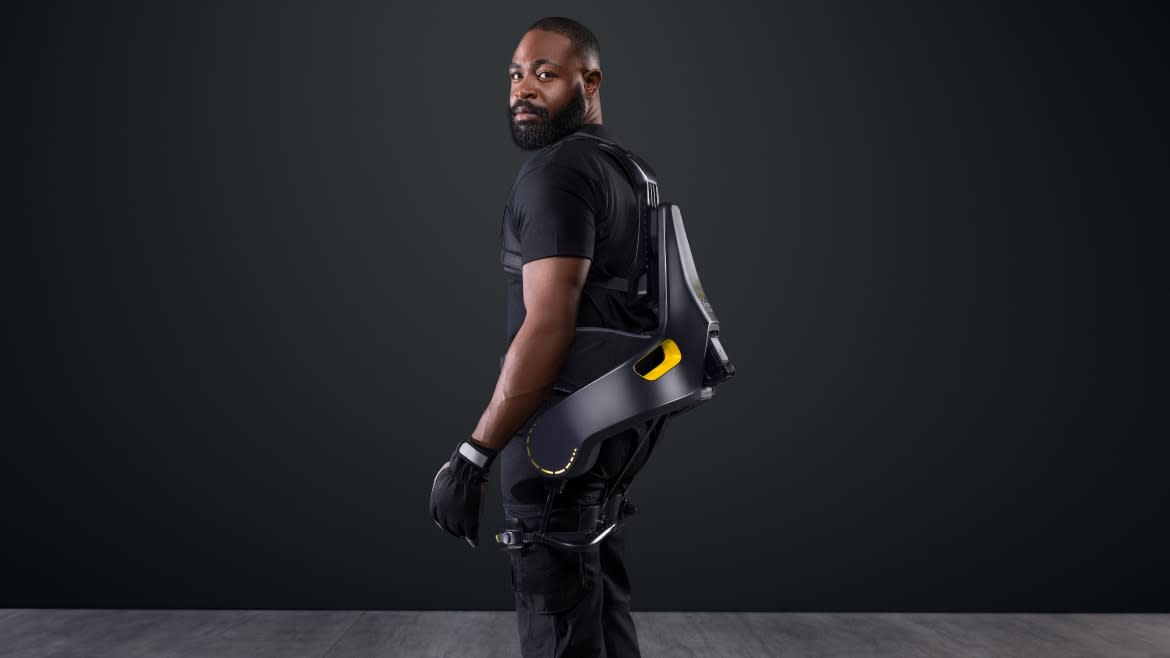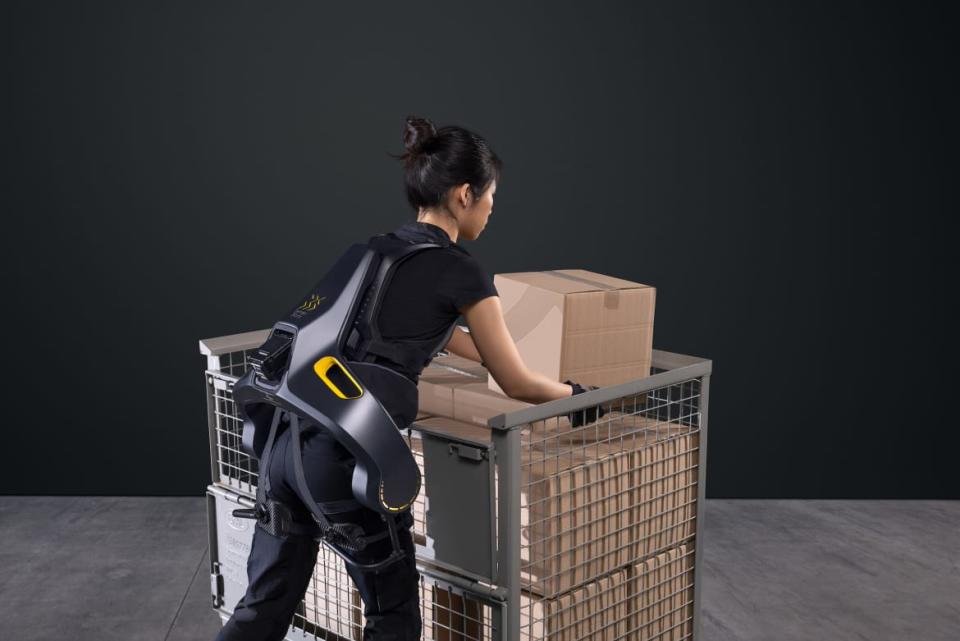This Exoskeleton Could Save a Worker’s Life

LAS VEGAS, Nevada—A German company is taking a page from the science-fiction playbook to help flesh-and-blood workers stay in the game.
German Bionic Systems, based in Augsburg, is one of many companies around the globe that have developed engineered “exoskeletons”—external frameworks modeled after the shells of creatures like crabs and insects—to increase physical strength and prowess, and let humans accomplish tasks the normal body cannot. The company is showcasing its “Apogee power suit,” which utilizes artificial intelligence technology, this week at the CES trade show in Las Vegas.
The Apogee looks something like a hard-shell backpack with a wrap-around waist component and weighs about 16.5 pounds—comparable to a hiker’s daypack loaded with extra clothing, water and a bit of food. It makes up for the added weight by providing up to 66 pounds of support for the lower back when a worker lifts heavy objects, and minimizes fatigue by providing assistance for walking. It also collects data that, among other things, identifies behaviors that increase the risk of injury, such as excessive repetition and improper lifting or twisting movements.
This Robotic Boot Lets You Walk Faster and Easier
There are roughly a dozen global players in the workplace exoskeleton market, according to Norma Steller, German Bionic Systems’ chief product manager. About a half-dozen currently incorporate some sort of robotics, but only German Bionic currently uses AI in its devices, she said.
What makes the Apogee different, she told The Daily Beast, is “how much power you get out of it” and the data readouts it produces.
The idea behind the Apogee is not actually to make workers stronger or faster, Steller said, but to spread out the stresses that cause them to become fatigued late in a shift or force them into early retirement. The focus isn’t increased productivity, but greater longevity. That helps companies address the skilled labor shortage that many are facing by minimizing workplace injuries and retaining older workers who might otherwise age out of strenuous jobs.
Some European and U.S. companies using the Apogee also have reported gains in productivity, but Steller said the focus of its developers remains on protecting skilled workers already on the job.
There’s no denying that large manufacturing companies in particular are increasingly embracing robotics as costs drop and capabilities grow. A 2019 study by economics advisory firm Oxford Economics predicted that robots will replace humans in 20 million manufacturing jobs by 2030.
The Daily Beast took a “test drive” of the Apogee in a suite at the Bellagio, where German Bionic Systems has set up shop during CES.
While the added weight was immediately noticeable, the first few steps made me forget about that as the walking assist technology kicked in, seeming to propel me forward around the room, accompanied by a slight whirring noise with each step.

But the real eye-opener occurred when I lifted a backpack that Steller had loaded with water bottles. When I bent over from the waist—ignoring the ergonomic warning that it’s better to squat and lift with your legs—the device kicked in with strong pressure on my lower back that quickly brought me back to the upright position without any noticeable strain. When I used the proper technique, it applied much less pressure, but still encouraged me to keep my back straight as I stood up.
German Bionics Systems, which won a “Best of Innovation” Award this year at CES, sees at least a 20-year window before AI-controlled machines will be able to replace highly skilled workers. According to Steller, that’s largely because of these machines’ inability to solve the kind of unexpected difficulties that regularly pop up in the workplace.
“These people know their jobs are safe as long as the robots call them for help when problems occur,” she said.
WATCH: Brain-Controlled Exoskeleton Allows Quadraplegic Man to Walk
Engineered exoskeletons are not new. Russian inventor Nicolas Yagn patented the first spring-loaded “apparatus for facilitating walking, running and jumping” in 1890.
They became more common in the late 20th century, and were mostly used to assist people in medical settings, particularly those who were unable to walk due to paralysis or other maladies. In recent years in the U.S., the Veterans Administration has provided the costly devices to military veterans injured while on active duty through a limited program.
Only in recent years have exoskeletons found their way into the workplace, thanks to recent advances that have reduced the weight and increased the power of these devices.
They are still costly, but becoming increasingly affordable for many companies. The newest Apogee model costs roughly $9,995 per unit (depending on the number purchased or rented) or can be leased for $249 per month.
Accessibility and cost will be especially key to expand the use of exoskeletons to other areas. Steller sees a possible future for the Apogee to help those who work in elder care—many of them women—to lift patients out of chairs and beds with much less strain.
Paralyzed Patients Walk Again, Thanks to Spinal-Cord Implants
The benefits of wearing an exoskeleton quickly became apparent when I tried out the Apogee. But pushback is inevitable. Steller said that some workers whose companies are using the technology are initially reluctant to try the device—particularly big, burly warehousemen who say “I don’t need that. I’m strong enough.”
Others may have misgivings from reading too many comic books about robots from space invading the Earth, or remember the Cyborg that tried to “assimilate” Captain Jean Luc Picard in Star Trek: First Contact.
But Steller said the skeptics generally come around pretty quickly once they see colleagues with exoskeletons walking around with a spring in their step and lifting loads with ease.
“They say, ‘Oh, wow, there’s really something going on there,’” she said.
Get the Daily Beast's biggest scoops and scandals delivered right to your inbox. Sign up now.
Stay informed and gain unlimited access to the Daily Beast's unmatched reporting. Subscribe now.

 Yahoo News
Yahoo News 
